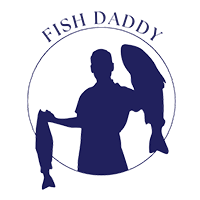
I was fortunate enough to team up with “Savernake Knives”, who are arguably the best knife makers out there (described as the Aston Martin of knives by The Times), with whom I designed this very own fish filleting knife of mine.
Why is the “Fish Daddy” knife so special? I consider myself a very analytical person (thank you, business school and corporate purgatory). So, when I began my apprenticeship as a fish-cutter at the tender age of 40, I got obsessed with understanding why certain knives and techniques were used on certain types on fish, whilst in other countries, different methods and approaches are more common. The more I filleted, the more fishmongers and chefs I trained with and the more I delved into the rabbit hole of researching filleting videos on YouTube, the more I began to understand this fundamental truth: There are three schools of filleting that determine your technique (European, American and Japanese) and three types of fish that determine your blade (round fish, flat fish and XL fish).
After trying out countless filleters and techniques on various species of fish, I got even more obsessed with another goal: Finding the One Knife to rule them all! A blade that would allow beginners and professionals alike to fillet every species, regardless of shape, size and technique. Filleting a sea bass? Easy. Cross-cutting a turbot or flounder? No problem. Slicing down a full-grown salmon? Easy-peasy!
Introducing the “Fish Daddy Filleter” – “The World’s Best Filleting Knife”: The tip of the blade is based on the shape of most European fishmonger’s “unofficial” favourite filleting knife, a classic meat boning knife. The slightly curved tip is ideal for guiding the blade around bones, avoiding cut-marks on the flesh.
In the US, everything is bigger and larger, as are many fish species and certainly their knives. The “Fish Daddy” blade length (180mm / 7 ¾”) and height are inspired by American filleting knives, which are generally longer and thinner. These are typically guided in a push cutting motion away from the fish’s head (inversely to the European technique) and used on bigger fish like snapper, mahi-mahi, cobia etc. Oh, did I mention that the length and the shortened bolster also make trimming easier?
And finally, flexibility. Based on the Japanese predilection for rigid filleting knives (yes, even and especially when cutting flat fish), the “Fish Daddy” filleter is semi-rigid, but more rigid than semi, allowing you to crack through medium sized bones when doing a reverse butterfly or block cut.
About Savernake Knives: Since you’ve made it this far, I’m almost certain that you’re now eager on learning more about this enigmatic brand that manufacture some of the world’s best custom kitchen knives in a remote workshop on the border of an old English forest. And what better place to do this than on their own site, with pretty pictures, technical details and a very seductive shop.